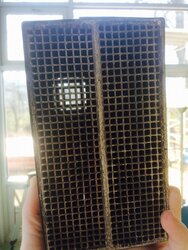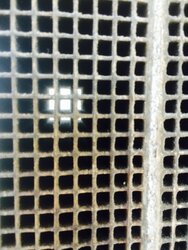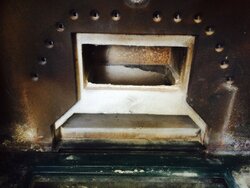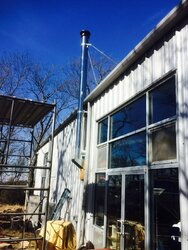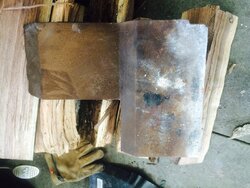So for a little background, I've lived with a wood stove in the house all of my life and wouldn't have it any other way. Only catch is that it's never had a cat.
A few years ago my uncle gave my parents their Jotul Firelight stove which has been sitting since then until this year. I installed it a couple of weeks ago and noticed the large bulge on the back (catalytic) and wondered what the deal with that was but figured I'd just get the stove installed and figured that out later. It has been very problematic right from the first fire and I'm sure at least some of it is my fault but here it goes. If the top load door or the front door gets opened, even just a couple of inches, smoke will start rolling into the house. Their house is directly on top of a very large hill (1,000' elevation difference from bottom of driveway to the house) and there is almost always a nice breeze or more up here. I ran the 6" pipe up 8' from the stove and then through the wall and then back up. I assumed I wasn't getting enough draw and that adding more pipe up top would be the answer but I am now 5-6' above the peak of the roof and still having the same issue. I have tried everything I can think of and am coming up empty handed. I started thinking that maybe the cat was clogged but it didn't make sense that it would matter when the bypass was open?
Also since I didn't know that it had a catalytic setup on it when I was doing the installation I put a damper plat above the stove int the black pipe like I have others before.
The only other issue they've had was kind of a bad one, my mom woke up the a house full of smoke and came out to find smoke and black drool coming from every seam on this stove. That was the ONLY time that the cat bypass has been closed and since have been using the damper plate that I put in.
Okay, I'm sure I'll catch heck for at least some of this but any pointers would be a tremendous help.
A few years ago my uncle gave my parents their Jotul Firelight stove which has been sitting since then until this year. I installed it a couple of weeks ago and noticed the large bulge on the back (catalytic) and wondered what the deal with that was but figured I'd just get the stove installed and figured that out later. It has been very problematic right from the first fire and I'm sure at least some of it is my fault but here it goes. If the top load door or the front door gets opened, even just a couple of inches, smoke will start rolling into the house. Their house is directly on top of a very large hill (1,000' elevation difference from bottom of driveway to the house) and there is almost always a nice breeze or more up here. I ran the 6" pipe up 8' from the stove and then through the wall and then back up. I assumed I wasn't getting enough draw and that adding more pipe up top would be the answer but I am now 5-6' above the peak of the roof and still having the same issue. I have tried everything I can think of and am coming up empty handed. I started thinking that maybe the cat was clogged but it didn't make sense that it would matter when the bypass was open?
Also since I didn't know that it had a catalytic setup on it when I was doing the installation I put a damper plat above the stove int the black pipe like I have others before.
The only other issue they've had was kind of a bad one, my mom woke up the a house full of smoke and came out to find smoke and black drool coming from every seam on this stove. That was the ONLY time that the cat bypass has been closed and since have been using the damper plate that I put in.
Okay, I'm sure I'll catch heck for at least some of this but any pointers would be a tremendous help.




